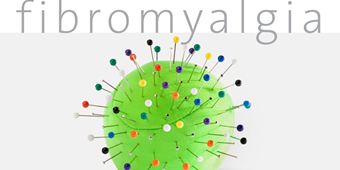Neck Nerves In a Pinch: Cervical Degenerative Disc Disease

Answer a few questions and we'll provide you with a list of primary care providers that best fit your needs.
Cervical degenerative disc disease is a natural part of getting older. It can even start in your 20s.
With age, discs – which absorb shock between the bones in your spine, the vertebrae – lose water content. This makes them more rigid and prone to cracking and tearing. And as they lose moisture, the discs lose height. This decreases the space between the vertebrae and can lead to pinched spinal nerves.
When the outer layer of discs crack and tear, and the discs bulge, rupture, or break apart, the jellylike material in the discs can be forced out.
Degenerative disc disease can happen anywhere in the spine. But it’s most common in the cervical discs, in the upper, neck region of the spine, and in the lumbar discs, in the lower back.
Symptoms Of Cervical Degenerative Disc Disease
In many adults, degenerative disc disease causes no noticeable symptoms.
For others, though, the symptoms of cervical disc disease can vary from pinching of the nerves causing radiculopathy, which can result in pain, numbness or tingling in your arms, or pinching of the spinal cord, which can cause trouble walking.
Cervical radiculopathy occurs when a nerve root in the cervical spine is pinched, inflamed, or damaged, resulting in symptoms such as numbness, altered reflexes, or weakness. Added pressure can be put on spinal nerve roots when bone spurs develop as the padding and space between vertebrae decreases.
The effects of radiculopathy can radiate from the neck to the shoulder, arm, hand, or fingers, causing pins-and-needles tingling and pain that can vary from achiness to shock-like or burning.
Cervical disc disease can be mistaken for other common things. Some of the symptoms overlap a lot with carpal tunnel syndrome, with the numbness and tingling going through the hand, or a pinched nerve at the elbow (cubital tunnel syndrome). People can also mistake shoulder pain as coming from their shoulder when it may actually come from a pinched nerve in their neck.
A few conditions are associated with cervical degenerative disc disease, developing at the same time, or one leading to the other, such as:
- Herniated cervical disc. This happens when tears or cracks form in the outer layer of the disc forcing out the jellylike, shock-absorbing material inside the disc. A traumatic injury, such as a fall, can cause a herniated disc, which accelerates disc degeneration.
- Cervical osteoarthritis. As discs degenerate, space between the vertebrae decreases. This can lead to osteoarthritis in the spine, as the protective cartilage in the facet joints – which provide flexibility to the spine – wears away, resulting in bone rubbing against bone. This friction also facilitates growth of bone spurs, which can cause pain and inflammation in the neck.
- Cervical spinal stenosis. This results from a narrowing of the spinal canal, which the spinal cord runs through, due to formation of bone spurs. It can lead to osteoarthritis.
Risk Factors For Cervical Degenerative Disc Disease
Your risk of developing cervical degenerative disc disease is greater if you:
- Smoke
- Have a history of trauma, such as a car accident or fall injury to the spine, such as a herniated disc, can sometimes start or accelerate cervical degenerative disc disease.
- Are obese
- Do work that requires repeated heavy lifting or other strenuous activity
Genetics can also play a role in increasing your chance of developing cervical degenerative disc disease.
How Degenerative Disc Disease Is Diagnosed
Your health care provider will diagnose you by conducting a physical exam and asking you about your symptoms and activities that could contribute to them, history of injuries and illnesses, and previous medical treatment.
Your provider will examine your range of motion in your affected areas, pain, tenderness, and nerve-related symptoms such as numbness, tingling, weakness, and changes in reflexes. Other conditions that could cause your symptoms, such as infections, fractures, and tumors, will also be considered.
Imaging tests could be used if your symptoms occur after an injury, or if your provider suspects nerve damage, or, due to your medical history, wants to examine you for other conditions, such as infection, tumors, or bone disease.
Treatment Of Cervical Degenerative Disc Disease
When cervical degenerative disc disease is less severe, it can be managed with physical therapy. Ice or heat may also be used. And your doctor may recommend over-the-counter nonsteroidal anti-inflammatory drugs – or prescription medications – to treat your pain.
If your condition is more severe, and doesn’t respond to nonsurgical treatments, your doctor may recommend surgery, such as:
Anterior cervical discectomy and fusion. This involves removing the affected disc, taking pressure off the nerve root, and inserting a bone graft or metal cage device to reestablish and maintain normal disc space.
If spinal cord compression causes neurological problems, the spinal canal can be widened, or part of a vertebra removed, to provide more space before the fusion.
Cervical artificial disc replacement. This surgery involves removing the affected disc and replacing it with an artificial disc.
Answer a few questions and we'll provide you with a list of primary care providers that best fit your needs.
Source: National Institutes of Health; spine-health.com




